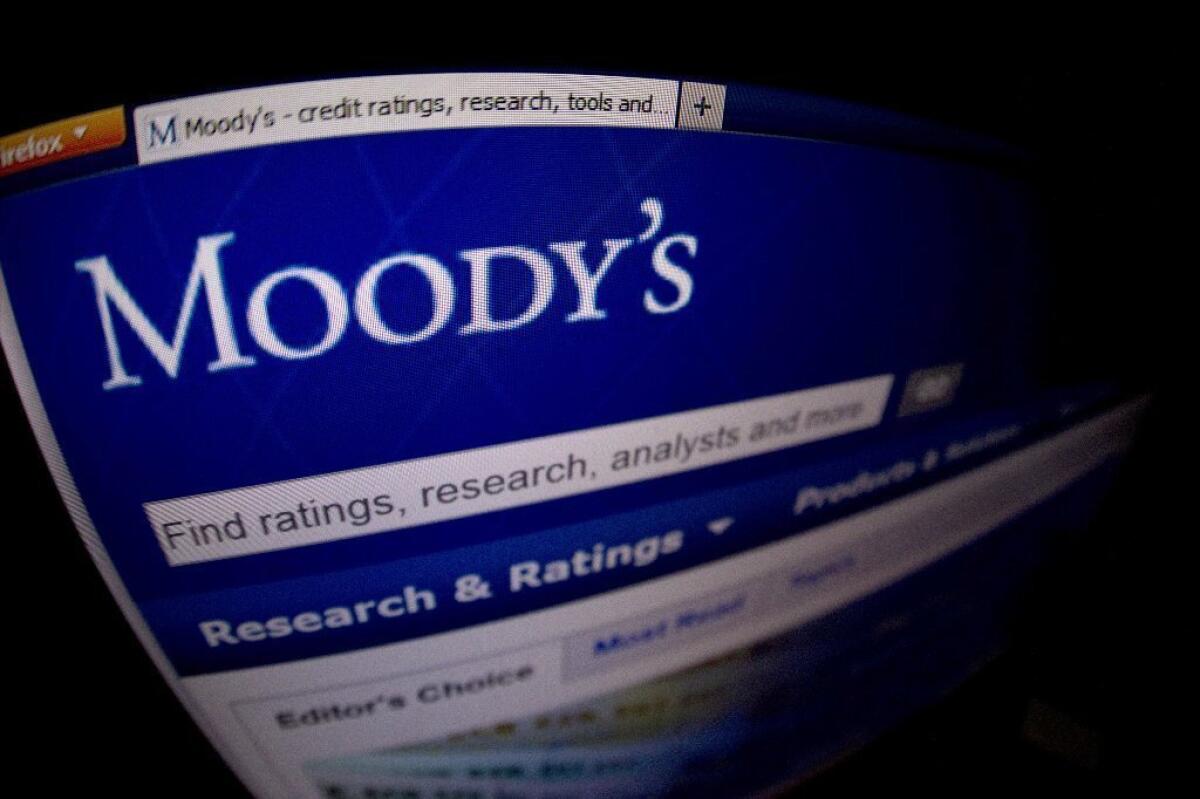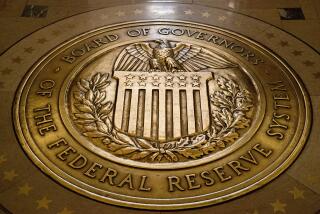Moody’s says ‘fiscal cliff’ deal doesn’t end credit downgrade risk

WASHINGTON -- Moody’s Investors Service warned Wednesday that the “fiscal cliff” tax deal was not enough to remove the risk of a downgrade of the U.S. credit rating.
The company, one of three major credit rating firms, said the deal approved Tuesday night to raise about $620 billion in tax revenue over the next 10 years was “a further step in clarifying the medium-term deficit and debt trajectory of the federal government.”
But the package, which averted income tax increases on most Americans, did not produce “meaningful improvement” in the ratio of the federal government’s debt to its economic output.
Although Moody’s said it expected additional deficit-reduction measures in the coming months, the company did not remove its negative outlook on the U.S.’ AAA rating. President Obama and Congress delayed automatic federal spending cuts for two months to provide time for negotiations on more deficit-reduction measures.
“Moody’s will need to consider these measures in assessing the rating outlook,” the company said Wednesday. The nation’s debt outlook after those negotiations will determine whether Moody’s downgrades the U.S. rating a notch to Aa1.
Moody’s initially warned in September that it probably would downgrade the rating if U.S. officials did not address the nation’s rising debt. Fitch Ratings issued a similar warning in November and reiterated it last week.
Fitch, which also has a negative outlook on the U.S. rating, had no update Wednesday.
[Updated 1:48 p.m. Jan. 2] Standard & Poor’s said Wednesday the tax deal would not change its AA+ credit rating for the U.S. or change the negative outlook it has for the rating.]
Moody’s said it was particularly concerned that the tax deal did not include an increase in the nation’s debt limit. The U.S. technically hit its $16.4-trillion debt limit Tuesday, but the Treasury Department said it could juggle the nation’s finances to allow for continued borrowing for about two more months.
The long, divisive fight over raising the debt limit in 2011 led Standard & Poor’s to downgrade its U.S. credit rating.
“Although Moody’s believes that the debt limit will eventually be raised and that the risk of default on Treasury bonds is extremely low, this confluence of events adds uncertainty to the outcome of negotiations” over spending cuts, Moody’s said.
The tax deal was positive for the U.S. economy because it averted the recession that probably would have hit in the first half of this year if all the George W. Bush-era tax cuts expired. But the expiration of temporary payroll tax break as of Tuesday “will likely be a constraint on growth in coming quarters,” Moody’s said.
The tax deal will help bring the ratio of debt to economic output down from an anticipated high of about 80% in 2014 to the upper 70% range for the rest of the decade, Moody’s said.
Although that’s an improvement, additional steps to bring the ratio down further are needed to save the nation’s AAA rating, Moody’s said.
ALSO:
Fitch Ratings warns of U.S. credit downgrade from fiscal cliff
Treasury to take steps to keep paying bills as debt limit nears
Moody’s warns of U.S. credit rating cut if debt problems continue
Follow Jim Puzzanghera on Twitter and Google+.







